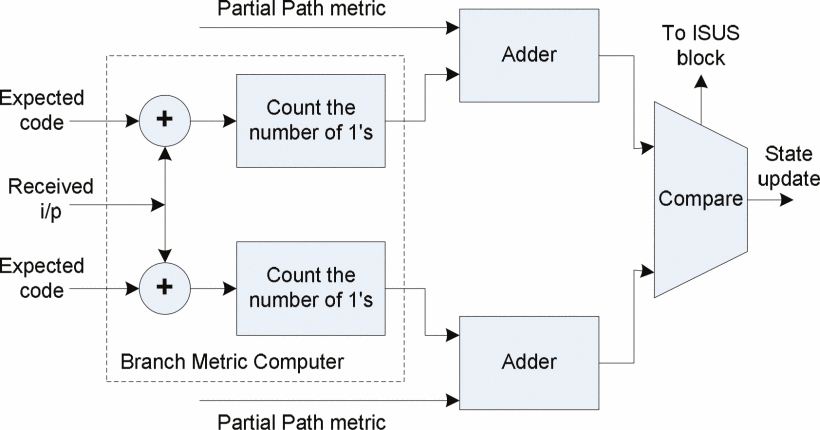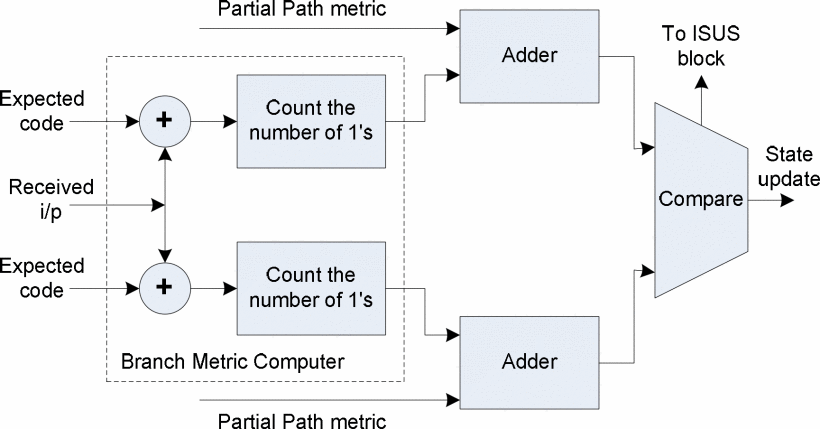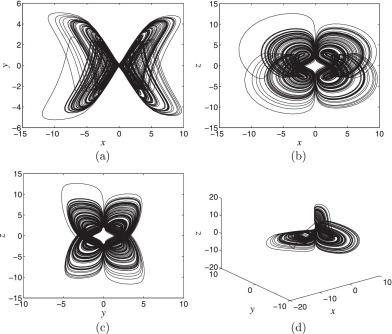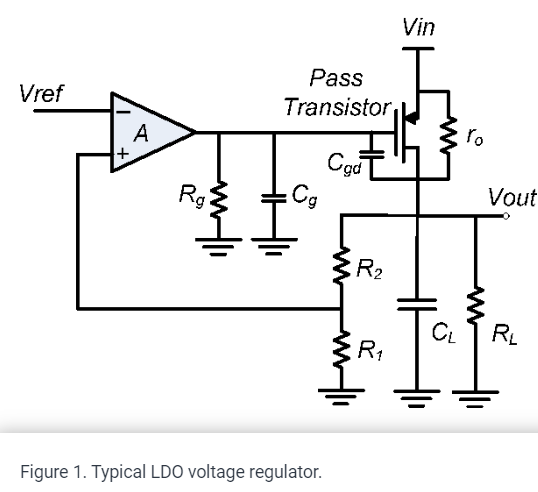Breadcrumb
Possibility of information encoding/decoding using the memory effect in fractional-order capacitive devices
In this study, we show that the discharge voltage pattern of a supercapacitor exhibiting fractional-order behavior from the same initial steady-state voltage into a constant resistor is dependent on the past charging voltage profile. The charging voltage was designed to follow a power-law function, i.e. [Formula: see text], in which [Formula: see text] (charging time duration between zero voltage to the terminal voltage [Formula: see text]) and p ([Formula: see text]) act as two variable parameters. We used this history-dependence of the dynamic behavior of the device to uniquely retrieve

FPGA implementation of a reconfigurable Viterbi decoder for WiMAX receiver
Field Programmable Gate Array technology (FPGA) is a highly configurable option for implementing many sophisticated signal processing tasks in Software Defined Radios (SDRs). Those types of radios are realized using highly configurable hardware platforms. Convolutional codes are used in every robust digital communication system and Viterbi algorithm is employed in wireless communications to decode the convolutional codes. Such decoders are complex and dissipate large amount of power. In this paper, a low power-reconfigurable Viterbi decoder for WiMAX receiver is described using a VHDL code for

FPGA implementation of a configurable viterbi decoder for software radio receiver
Convolutional codes are one of the Forward Error Correction (FEC) codes that are used in every robust digital communication system. Viterbi algorithm is employed in wireless communications to decode the convolutional codes. Such decoders are complex and dissipate large amount of power. Software Defined Radio (SDR) is realized using highly configurable hardware platforms. Field Programmable Gate Array technology (FPGA) is a highly configurable option for implementing many sophisticated signal processing tasks in SDR. In this paper, a generic, configurable and low power Viterbi decoder for
Fibonacci-based hardware post-processing for non-autonomous signum hyperchaotic system
This paper presents a hardware implementation of a robust non-autonomous hyperchaotic-based PRNG driven by a 256-bit LFSR. The original chaotic output is post-processed using a novel technique based on the Fibonacci series, bitwise XOR, rotation, and feedback. The proposed post-processing technique preserves the throughput of the system and enhances the randomness in the output which is verified by successfully passing all NIST SP. 800-22 tests. The system is realized on a Xilinx Virtex 4 FPGA achieving throughput up to 13.165 Gbits/s for 16-bit bus-width surpassing previously reported CB

Four-wing attractors in a novel chaotic system with hyperbolic sine nonlinearity
Chaotic systems generating multi-wing attractors have received considerable attention in the literature. In this work, we propose a novel three-dimensional chaotic system with hyperbolic sine nonlinearity. It is worth noting that the system is elegant and includes only one parameter. Despite its simple structure, the new system displays double-wing and four-wing chaotic attractors. By studying dynamics of the system, coexistence of limit cycles or chaotic attractors is discovered. The capable of the synchronization of new chaotic system is verified by using an adaptive control. Furthermore, an
Chaos-based hardware speech encryption scheme using modified tent map and bit permutation
This paper proposes a speech encryption scheme based on a generalized modified chaotic tent map and bit permutation and presents its hardware realization. The generalization scales the output range and increases the key space. The modification controls the bounds on the output range through a parameter such that chaotic output exists for almost all values of the parameter. The security and efficiency of the speech encryption scheme are validated through the randomness of the encrypted signal, the key sensitivity and the hardware resources utilization. The proposed scheme utilizes less FPGA
FPGA realization of speech encryption based on modified chaotic logistic map
This paper presents an FPGA design and implementation of a chaotic speech encryption and decryption system based on bit permutations. Different encryption schemes are realized and compared. In addition, various testing methods including entropy, mean squared error, and correlation coefficients are used to analyze the efficiency of the system. The techniques for area and delay minimization are used. Carry look-ahead adder, multi-operand adder and booth multiplier are used to improve the performance of the encryption schemes design. A comparison between the different encryption architectures and
FPGA realization of a speech encryption system based on a generalized modified chaotic transition map and bit permutation
This paper proposes a generalized modified chaotic transition map with three independent parameters. A hardware speech encryption scheme utilizing this map along with a bit permutation network is presented. While the transition map’s generalization introduces additional parameters, the modification enhances its chaotic properties and overcomes the finite range of the control parameter and dynamical degradation problems. The modification also presents a simplification for the hardware realization of the exponentiation operation in the map’s equation because the modified output range allows

Parallel feedback compensation for LDO voltage regulators
A novel low dropout (LDO) voltage regulator compensation technique is demonstrated. A parallel feedback path is used to insert a zero at approximately three times the output pole. The parallel feedback consists of passive elements only and occupies small area. The proposed technique completely eliminates the output pole at different load conditions and results in high LDO bandwidth, which achieves fast output tracking of the input reference and fast recovery of sudden load changes. Moreover, the output pole elimination at different load conditions enables the potential scaling of the error
Multi-phase oscillator for higher-order PSK applications
Multi-phase oscillator is an essential block in digital communication systems especially phase shift keying PSK based systems. In this paper, a procedure for designing a multi-phase oscillator with any required phase shift is proposed, unlike the previous oscillator which generates equal phase shifts. This oscillator circuit is built using fractional-order elements to generate any distribution of phase shift. The general characteristics equation is studied where the condition for oscillation and oscillation frequency are derived. Finally, different examples are introduced with their
Pagination
- Previous page ‹‹
- Page 43
- Next page ››
